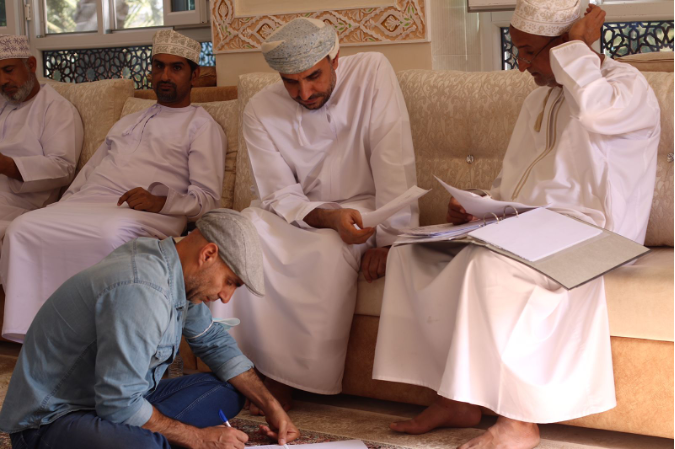What is socio-hydrology?
Majid Labbaf Khaneiki
Assistant Professor
UNESCO Chair on Aflaj Studies and Archaeo-Hydrology
University of Nizwa
As a socio-hydrologist, I have often been faced with the question: what exactly is socio-hydrology? Some of my friends think that I have put my education in human geography on the back burner and that I am now dabbling in something different called socio-hydrology. However, socio-hydrology is situated within the field of human geography, and both fall under the broad category of social sciences.
Socio-hydrology belongs to the discipline of environmental sociology, albeit with an approach based on critical realism. According to Giddens, critical realism leads toward environmental sociology that attempts to explain and interpret the complex interactions between the natural environment and human societies by collating a wide range of information from both the natural and social sciences. Unlike constructionist sociology, critical realism does not remain confined to conventional sociological theories; it also considers the objective reality of natural phenomena such as water. Thus, critical realism not only regards water as an inorganic compound, most of which circulates within hydrological cycles but also examines water’s potential to take on an absolute social dimension as soon as it comes into contact with human civilizations.
Although socio-hydrology builds on hydrological studies, it demands a high level of sociological imagination to fulfil its mission of understanding how water and society have historically affected one another. Water may turn into a multifaceted conundrum with numerous tentacles spreading across different scientific disciplines and categories, requiring field-based, integrative, and holistic hermeneutics for its understanding. Nevertheless, a socio-hydrological analysis does not always seek to find solutions to such conundrums; rather, it may also explore the meaning of social structures and behaviours in a hydrological context.
Wesselink and others distinguish between socio-hydrological and hydro-sociological studies. They argue that socio-hydrological studies mostly adopt a positivist, quantitative, and objective approach to address human-induced, measurable variables that influence hydrological systems, whereas hydro-sociological studies focus on inquiries into water-induced social transitions through an interpretive-axiological lens. However, it seems that what they call socio-hydrology is akin to IWRM (Integrated Water Resources Management), which is studied and taught by engineers, rather than the study of the multilateral relationships between water resources and human agency, which is of interest to social scientists. Such a wordplay only complicates the genuine agenda of this field of science, regardless of whether it is called socio-hydrology or hydro-sociology.
In a nutshell, IWRM employs a management-oriented and scenario-based methodology to investigate the interactions between water and people, with a mandate to predict the future state of water resources under different socio-economic circumstances. IWRM’s methodology aims to make a sustainable socio-economic choice between different water allocations to ensure the stability of water resources, beneficiary societies, and the infrastructures used for water management. This methodology may take two different forms, depending on the varying degrees of significance attached to each player in a water management model. The Hobbesian form of IWRM is fixated on a bipolar arrangement between the government and water resources, where the government’s water policy is the monopolistic determinant of water appropriation. In contrast, the Lockean form revolves around a trilateral interplay between the government, civil society actors, and water consumers, which forms the basis of a country’s water governance.
Although socio-hydrology does not limit itself to finding managerial solutions to water issues, many of its discoveries can still be applied in other fields such as IWRM. The primary difference between IWRM and socio-hydrology lies in their fundamental questions: the former asks how water resources and their allocation systems can be sustainably regulated and reorganized, while the latter asks how coupled human water systems co-evolve. Therefore, socio-hydrology is more of a fundamental scientific endeavour that seeks to push the boundaries of our knowledge regarding human socio-economic behaviours in relation to water resources as a component of geographic spaces. In this sense, it falls within the field of human geography in the social sciences, which explores geographic space as a set of locations shaped and regulated by human activities.
I agree with Sivapalan that socio-hydrology is fundamentally the study of the co-evolution of human societies and their water resources on the landscape. Therefore, socio-hydrology presents itself as a robust field of research within the social sciences, seeking to explore water-society relations as conceptualized through themes such as water justice, water policy, hydro-imperialism, hydro-colonialism, hydro-feminism, indigenous water knowledge, virtual water trade networks, water cooperation and conflicts, and water diplomacy, among others.
A socio-hydrological study was conducted by the UCASA team, in the village of Al-Wasit in northern Oman in 2022.



